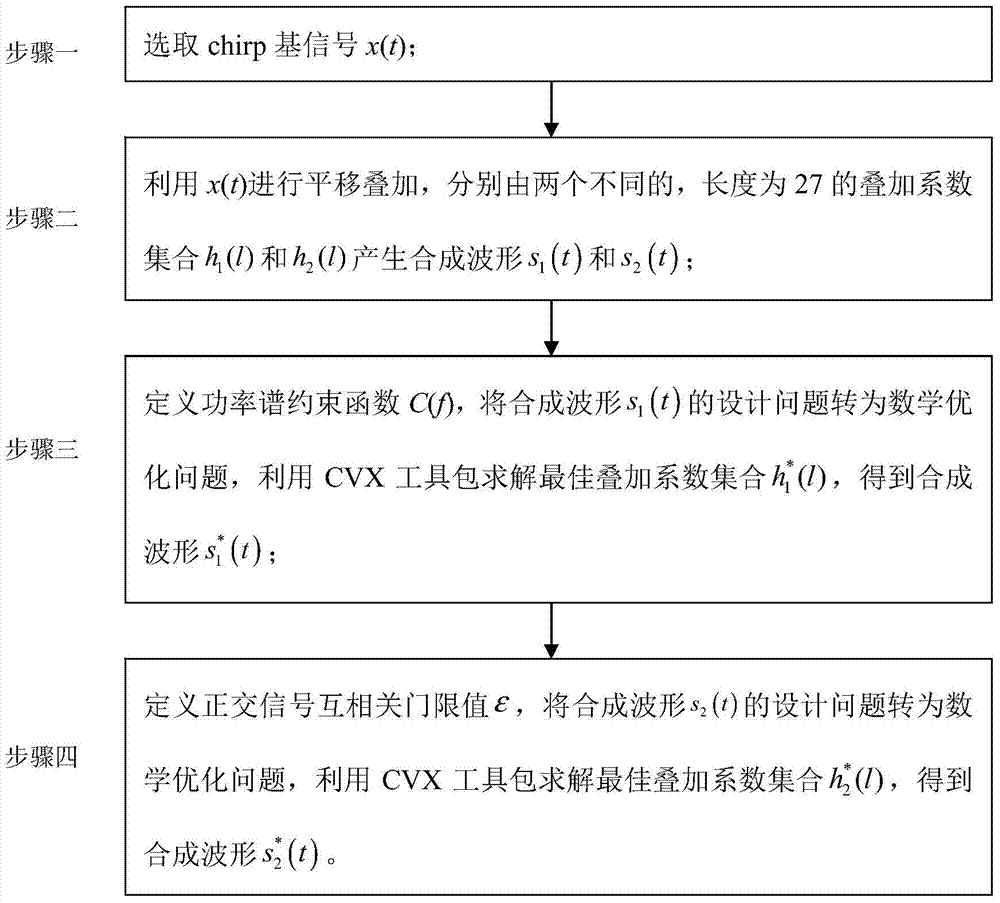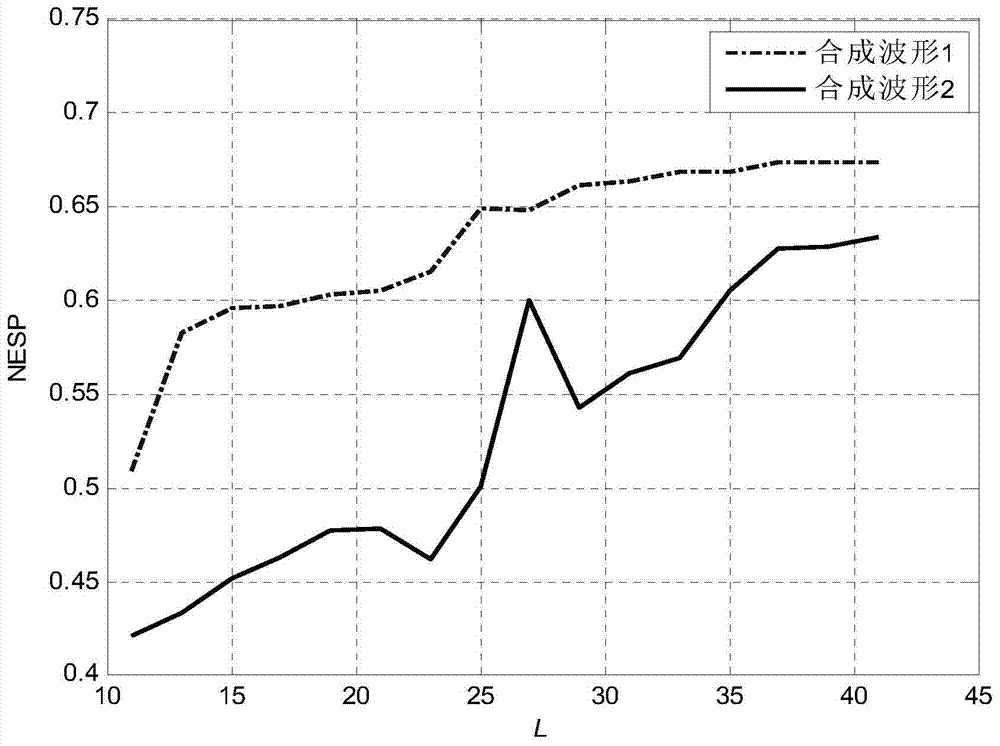An Orthogonal Narrowband Waveform Design Method for Cooperative Spectrum Sensing
A collaborative spectrum sensing and waveform design technology, applied in transmission monitoring, electrical components, transmission systems, etc., can solve problems such as low power utilization and poor waveform orthogonality, and achieve high power utilization, high waveform orthogonality, The effect of good cross-correlation properties
- Summary
- Abstract
- Description
- Claims
- Application Information
AI Technical Summary
Problems solved by technology
Method used
Image
Examples
specific Embodiment approach 1
[0019] Specific implementation mode one: combine figure 1 Describe this embodiment, a kind of orthogonal narrow-band waveform design method oriented to collaborative spectrum sensing, it is characterized in that, a kind of orthogonal narrow-band waveform design method oriented to cooperative spectrum sensing is specifically carried out according to the following steps:
[0020] Step 1. Select the chirp base signal x(t);
[0021] Step 2: Use x(t) to carry out translation and superposition, respectively by two different superposition coefficient sets h with a length of 27 1 (l) and h 2 (l) Generate a synthetic waveform s 1 (t) and s 2 (t);
[0022] Step 3. Define the power spectrum constraint function C(f), and synthesize the waveform s 1 The design problem of (t) is transformed into a mathematical optimization problem, and the optimal stacking coefficient set is solved using the CVX toolkit get the best synthesized waveform
[0023] Step 4: Define the orthogonal sign...
specific Embodiment approach 2
[0024] Specific embodiment two, the difference between this embodiment and specific embodiment one is that the chirp base signal x(t) is selected in the step one; the specific process is:
[0025] The chirp base signal is expressed as:
[0026]
[0027] Among them, A is the amplitude of the chirp base signal, f 0 is the center frequency of the chirp base signal, k is the modulation frequency, T is the duration of the signal, e is the natural logarithm, j is the imaginary number unit, and t is time.
[0028] According to the fractional Fourier transform, the fractional Fourier transform of the chirp base signal x(t) is expressed as
[0029]
[0030] in, is the kernel function of fractional Fourier transform, where α is the rotation angle, α≠kπ, and u is the independent variable in the fractional domain;
[0031] According to the relationship between the fractional Fourier transform of the chirp base signal x(t) and the time-frequency distribution, when the rotation an...
specific Embodiment approach 3
[0035] Specific embodiment 3. The difference between this embodiment and specific embodiment 1 or 2 is that in the second step, x(t) is used for translation and superposition, and there are two different superposition coefficient sets h with a length of 27 1 (l) and h 2 (l) Generate a synthetic waveform s 1 (t) and s 2 (t); the specific process is:
[0036] Synthetic waveform s after weighted translation superposition 1 (t) and s 2 (t) can be expressed as:
[0037]
[0038]
[0039] Among them, x(t) is the chirp basis function; h 1 (l) is the synthetic waveform s 1The lth superimposition coefficient of the superimposed waveform in (t), -13≤l≤13; h 2 (l) is the synthetic waveform s 2 The lth superimposition coefficient of the superimposed waveform in (t), -13≤l≤13; h 1 (l) and h 2 (l) are evenly symmetrical about the origin; M=(L-1) / 2 is the number of chirp base signals superimposed on one side, M=13; L is the total number of signals of the superimposed waveform...
PUM
 Login to View More
Login to View More Abstract
Description
Claims
Application Information
 Login to View More
Login to View More - R&D
- Intellectual Property
- Life Sciences
- Materials
- Tech Scout
- Unparalleled Data Quality
- Higher Quality Content
- 60% Fewer Hallucinations
Browse by: Latest US Patents, China's latest patents, Technical Efficacy Thesaurus, Application Domain, Technology Topic, Popular Technical Reports.
© 2025 PatSnap. All rights reserved.Legal|Privacy policy|Modern Slavery Act Transparency Statement|Sitemap|About US| Contact US: help@patsnap.com



